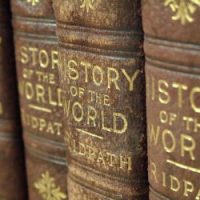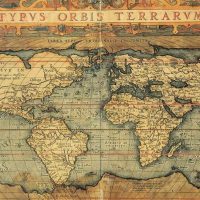Category: Essay Examples
Essay examples are of great value for students who want to complete their assignments timely and efficiently. If you are a student in the university, your first stop in the quest for research paper examples will be the campus library where you can get to view the sample essays of lecturers and other professionals in diverse fields plus those of fellow students who preceded you in the campus.
Browse Essay Examples:
Many college departments maintain libraries of previous student work, including essays, which current students can examine. This collection of free essay examples is our attempt to provide high quality samples of different types of essays on a variety of topics for your study and inspiration.
The Greeks had a strong belief in the importance of poetry, and the Romans continued this with a large number of poets, some of whom wrote short poems and others, like Virgil, composed massive epics such as the Aeneid. Other famous Roman poets include Lucretius, Catullus, Horace, Ovid, …
The deposition of the last emperor, Romulus Augustulus, in 476 c.e. by the Gothic chief Odovacar marks the fall of the Western Roman Empire and the subsequent transition from classic antiquity to the Middle Ages. The deposition of Romulus Augustulus was a chronological benchmark that was conventionally established …
Numerous stories have been drafted of the origins of Rome, mostly crossed with mythological and literary elements. Historical sources include epigraphic evidence, narrations from Greek or Roman historians, and various archaeological findings. According to legend, Aeneas disembarked in Italic shores, his son Ascanius founded Alba Longa, and their …
As Rome developed into a veritable power on the Italian peninsula and later throughout Europe, so too did the famous Roman Republic, based around the Roman Senate. But Rome’s first governmental system was monarchial. The Roman king had absolute power, referred to by ancient Romans as imperium. He …
The Rosetta Stone was discovered by French soldiers during the Napoleonic conquest and occupation of Egypt (1798–1801). With the same inscription in hieroglyphics, demotic (a later form of ancient Egyptian), and Greek, the text is a 196 b.c.e. commemoration to Ptolemy V Epiphanes. The French savants (intellectuals) that …
The popular conception of the Sadducees is a “straw man” set up in parallel with the Pharisees. The Sadducees disappeared after the Romans invaded Jerusalem and destroyed the Temple (70 c.e.). They left no written records, much less apologia. Historians relate negative reports from the antagonists of the …
The Sakya kingdom of early northern India is renowned as the homeland of Gautama Buddha. It should be distinguished from the Sakya school of Tibetan Buddhism that is associated with Vajrayana Buddhism. Sakya is identified as a territory on the borders of Nepal and India and had a …
The San and Khoi (or Khoi-Khoi) tribes are among the first identifiable tribes in southern Africa. The San, considered southern Africa’s indigenous population, were later displaced by the Khoi-Khoi in a struggle for survival in one of the planet’s most unforgiving regions. In earlier accounts the two groups …
Sanskrit is an ancient Indo-Aryan language that has for thousands of years become associated with religious teachings and beliefs, notably Hindu and Buddhist forms of thought. Its earliest use is associated with the migrating Aryan peoples who settled in north India and Iran and from whom several families …
Sappho is one of the most important of the lyric poets of the ancient Greek world. She probably lived from the middle part of the seventh through the early part of the sixth centuries b.c.e. Though the exact date of her birth and death are unknown, it is …
Sargon of Akkad was the first Mesopotamian ruler to control both southern and northern Babylonia thus becoming the king of Sumer and Akkad and inaugurating the Akkadian Empire. He established his capital at the newly founded site of Akkad in northern Babylonia; its exact location is unknown but …
The Sassanid Empire was the last pre-Islamic Iranian dynasty that ruled over a large part of western Asia. Following the Achaemenid dynasty, the Sassanids are considered one of the most powerful and famous Iranian dynasties that positively influenced the evolution of Iranian nationality and culture during their 400-year …
The story of Saul is the story of how Israel received its monarchy. It is a tragic story because Saul represents the acceptance of a line of kings, yet the biblical commentary makes known that this new form of government represents a rejection of direct divine government represented …
Scribes were key to the administrative and legislative aspects of many societies after the creation of writing and fulfilled numerous functions other than simply record keeping. Very often scribes were instrumental in creating and maintaining the legal, economic, and religious aspects of a culture. In many cultures scribes …
At the end of the third and the beginning of the second millennia b.c.e. Egypt was beset by a series of invasions. Diverse groups whom the Egyptians associated with “the north” and the Mediterranean Sea carried out these invasions. The most distinguishable groups were the Denyen, Ekwesh, Lukka, …
The philosophical school of sophism, which first flourished in fifth-century b.c.e. Athens, underwent a revival in the second century c.e., and for a brief period it attained a measure of intellectual fashionableness. Although the political center of the Western world moved from Greece to Rome, the new capital …
The Seleucid Empire (312–63 b.c.e.) was the largest of the Hellenistic states that emerged from the conquests of Alexander the Great. Seleucus I (c. 358–281 b.c.e.), one of Alexander’s generals, founded the Seleucid Empire in 312. Seleucus, who took the title Nicator, or “victor,” was the most successful …
Lucius Annaeus Seneca’s father, Marcus Annaeus Seneca (Seneca the Elder, c. 55 b.c.e.–39 c.e.), was an imperial procurator. He so mastered public speaking and debate that he became an authority on rhetoric. Marcus Annaeus had two other sons besides Lucius Annaeus Seneca. The eldest was Junius Annaeus Gallio, …
Septimus Severus was founder of the African dynasty of Roman emperors. He came from a family of Roman citizens who had served as imperial bureaucrats in northern Africa. He found favor with the emperor Marcus Aurelius and served in many high provincial positions. Under Emperor Commodus, Septimus Severus …
The Servant Songs refers to a group of texts found in the biblical book of Isaiah. These passages center upon someone known as the Servant of the Lord. This person or character is commissioned by the God of the Bible to carry out a mission in relation to …


